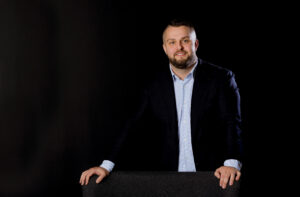The current economic situation is only a light preview of what the near future will bring, says Merle Laurimäe, CEO and Member of the Management Board of Julianus Inkasso, a subsidiary of Aktiva Finance Group. According to the CEO, 2019 will likely remain the peak of the “good times” for a long time to come, and that in the near future, we will have to come to terms with a new reality.
Today, our economy is clearly influenced by two main aspects: energy and inflation. One does affect the other, but looking at them separately, it is easy to see why there is no room for excessive optimism – energy consumption and economic growth have always gone hand in hand based on historical data and the assumption that we will be able to outgrow the money-printing inflation over time seems more and more naive.
The energy crisis is not a new concept for anyone today, but it is wrong to look at what is happening today only through the prism of a war situation. While Russia’s invasion of Ukraine has had a tremendous impact on the energy sector, alongside all the humanitarian issues, the end of the conflict will not mean that things can quickly get back to business as usual. It would certainly be helpful, but an improvement in the security of supply or a modest fall in prices would not remove the root causes of today’s problems.
A new reality
Based on historical data, the correlation between economic growth and energy consumption growth has been almost one-to-one. In the past, we have been able to burn vast quantities of fossil fuels, keep growing and benefit from relatively low prices. But there is a limit, and that limit appears to be here. When a percentage increase in GDP usually goes hand in hand with half a percentage increase in electricity consumption and a quarter of a percentage increase in fuel consumption, it is difficult to see where there is room for continued growth today.
We can only consume so much electricity or burn so much fuel before physically reaching a ceiling. Of course, environmental considerations, the green revolution, availability, and price also play a role. Some of these concerns may be resolved in the long term, but not all of them and not immediately.
While energy prices have not reached new records this year, and oil prices remain surprisingly cheap, economic growth requires all the pieces to fit together. The green energy triumph may be the way forward, but it is not an immediate solution because it needs a lot of work. It should also be recognized that, alongside the green revolution, there is a continuing need to address immediate needs – to keep people from freezing or living in the dark – which has given the’ business as usual’ energy sector a new lease of life and pushed a lot of green investments into the distant future.
Inflation doesn’t rest
Alongside the limits the energy sector sets, inflation doesn’t have a lesser role. The COVID-19 pandemic led to a substantial financial meltdown, and when you add to that the 15 years of living without thinking about the future, it is easy to see that, at some point, we have to deal with the consequences. The attitude that ‘inflation is okay because growth will cover it’ was wrong, and central banks themselves have now realized this too.
Interest rates have already risen to record levels considering the foreseeable future today – even though a decade ago, the most pessimistic people put their Euribor forecast at two percent – and this does not seem to help put things on the right track. US data from the end of 2022 shows that despite the sharp rise in interest rates, the dashboards are still in the red, companies are hiring massively, wages are rising higher and higher, and, as a natural side effect of these indicators, inflation is also edging upwards.
Central banks cannot continue to raise interest rates indefinitely either; at some point, the countries’ wallets will burn a hole in them. It is difficult to say which path regulators will choose, but some change is in store. Whether it is a further steep rise in interest rates, fixating them, or even a resumption of money printing, there is no sign of anything too optimistic.
History has a habit of repeating itself
Predicting the future is a thankless pursuit, but walking around with rose-tinted glasses is dangerous. We can only hope that things will get back on track, that people and countries will have learned something since 2008, and that the economy will soon stabilize. But we should not delude ourselves. Who knows, maybe something will be different this time, and a magic fix will appear, although, sadly, history has a habit of repeating itself.
The most likely scenario is that things will worsen for a while and then stabilize. But it will stabilize at a point that has not been the norm for a long time. We will unlikely find ourselves in a complete black hole, but things need to change; businesses need to adjust, consumers need to get used to higher prices, and markets need to absorb the correction. If we keep moving forward, there is hope that we will return to a world full of brighter colors.








